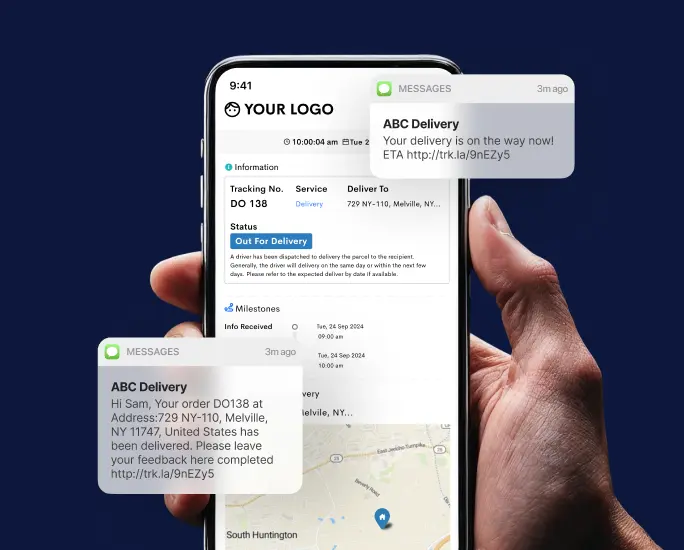The distributor industry is undergoing a transformative phase driven by technological advancements, changing consumer preferences, and evolving market dynamics.
As we navigate through 2024, several emerging trends are shaping the distribution landscape, presenting opportunities and challenges for industry players. Understanding these trends and their implications is crucial for distributors to stay competitive and relevant in this fast-evolving sector.
| Streamline Your Deliveries with Detrack Transform your logistics with Detrack, a delivery management system for efficient, real-time tracking and exceptional customer satisfaction. Try Detrack Today! |
Emerging Trends in the Distributor Industry and Their Implications
1. Digital Transformation and Automation
Digital transformation is at the forefront of the distributor industry, with companies increasingly adopting advanced technologies such as Artificial Intelligence (AI), Machine Learning (ML), and the Internet of Things (IoT) to streamline operations and enhance efficiency.
Implications:
- Operational Efficiency: Automating routine tasks such as inventory management, order processing, and logistics can significantly reduce human error and improve accuracy. This leads to faster turnaround times and better customer satisfaction.
- Data-Driven Decision Making: AI and ML enable distributors to analyze vast amounts of data to predict demand, optimize supply chains, and personalize customer experiences. This data-driven approach helps make informed decisions, reduce costs, and improve profitability.
- Enhanced Customer Experience: Digital tools can provide real-time updates, track shipments, and offer self-service options to customers, enhancing their overall experience and building loyalty.
2. E-commerce Integration
The rise of e-commerce has transformed how distributors interact with customers. Integrating e-commerce platforms is essential for distributors to reach a broader audience and provide a seamless purchasing experience.
Implications:
- Broader Market Reach: E-commerce platforms allow distributors to reach customers beyond their traditional geographic boundaries, opening up new markets and revenue streams.
- Improved Customer Convenience: Offering online purchasing options caters to the growing preference for digital shopping, providing customers convenience and flexibility.
- Increased Competition: While e-commerce presents opportunities, it also intensifies competition. Distributors must differentiate themselves through unique value propositions, superior service, and competitive pricing.
3. Sustainable Practices
Sustainability has become a critical focus for businesses across all industries, and distribution is no exception. Companies increasingly adopt sustainable practices to reduce their environmental footprint and meet the growing demand for eco-friendly products.
Implications:
- Regulatory Compliance: Governments worldwide are implementing stricter environmental regulations. Distributors must adopt sustainable practices to comply with these regulations and avoid penalties.
- Consumer Demand: Modern consumers are more environmentally conscious and prefer buying from companies prioritizing sustainability. Adopting green practices can enhance brand reputation and attract eco-conscious customers.
- Cost Savings: Sustainable practices such as reducing waste, optimizing transportation routes, and using energy-efficient technologies can lead to significant cost savings in the long run.

4. Omnichannel Distribution
The omnichannel approach integrates various channels to provide a cohesive customer experience, whether the customer is shopping online, in-store, or through other channels.
Implications:
- Seamless Customer Experience: An omnichannel strategy ensures customers have a consistent and seamless experience across all touchpoints, improving satisfaction and loyalty.
- Better Inventory Management: Integrating different channels allows for more effective inventory management, reducing the risk of stockouts or overstocking.
- Increased Sales Opportunities: Offering multiple customer channels to purchase products can increase sales opportunities and drive higher revenue.
5. Supply Chain Resilience
The COVID-19 pandemic highlighted the vulnerabilities in global supply chains. As a result, distributors focus on building more resilient supply chains to withstand future disruptions.
Implications:
- Diversified Supplier Base: Relying on a diverse set of suppliers reduces the risk of disruptions caused by geopolitical tensions, natural disasters, route planning issues, or other unforeseen events.
- Inventory Buffer: Maintaining a buffer stock can help mitigate the impact of supply chain disruptions and ensure continuity of supply.
- Advanced Planning: Utilizing predictive analytics and AI to anticipate potential disruptions and plan accordingly can enhance supply chain resilience and agility.
6. Personalization and Customer-Centricity
Personalization is becoming increasingly important as customers expect tailored experiences and solutions that meet their specific needs.
Implications:
- Customer Loyalty: Personalized experiences can foster stronger customer relationships and increase loyalty.
- Higher Conversion Rates: Tailoring offerings to individual customer preferences can lead to higher conversion rates and sales.
- Enhanced Customer Insights: Leveraging data analytics to understand customer behavior and preferences can provide valuable insights for developing targeted marketing strategies and improving product offerings.
7. Collaborative Partnerships
Collaboration between distributors, suppliers, and customers is becoming more prevalent, fostering a more integrated and cooperative approach to business.
Implications:
- Shared Resources: Collaborative partnerships can lead to shared resources, reducing costs and improving efficiency.
- Innovation: Working closely with partners can drive innovation as companies combine their expertise and insights to develop new products and solutions.
- Stronger Relationships: Building strong partnerships can enhance stakeholder trust and loyalty, leading to long-term business success.
Conclusion
The distributor industry is at a pivotal juncture, with emerging trends such as digital transformation, e-commerce integration, sustainability, omnichannel distribution, supply chain resilience, personalization, and collaborative partnerships reshaping the landscape.
Distributors that proactively embrace these trends and adapt their strategies accordingly will be well-positioned to thrive in the evolving market.
To stay ahead, distributors must invest in advanced technologies, adopt sustainable practices, build resilient supply chains, and prioritize customer-centric approaches. By doing so, they can not only navigate the challenges but also capitalize on the opportunities presented by these emerging trends, ensuring long-term success and growth in the dynamic distributor industry.










